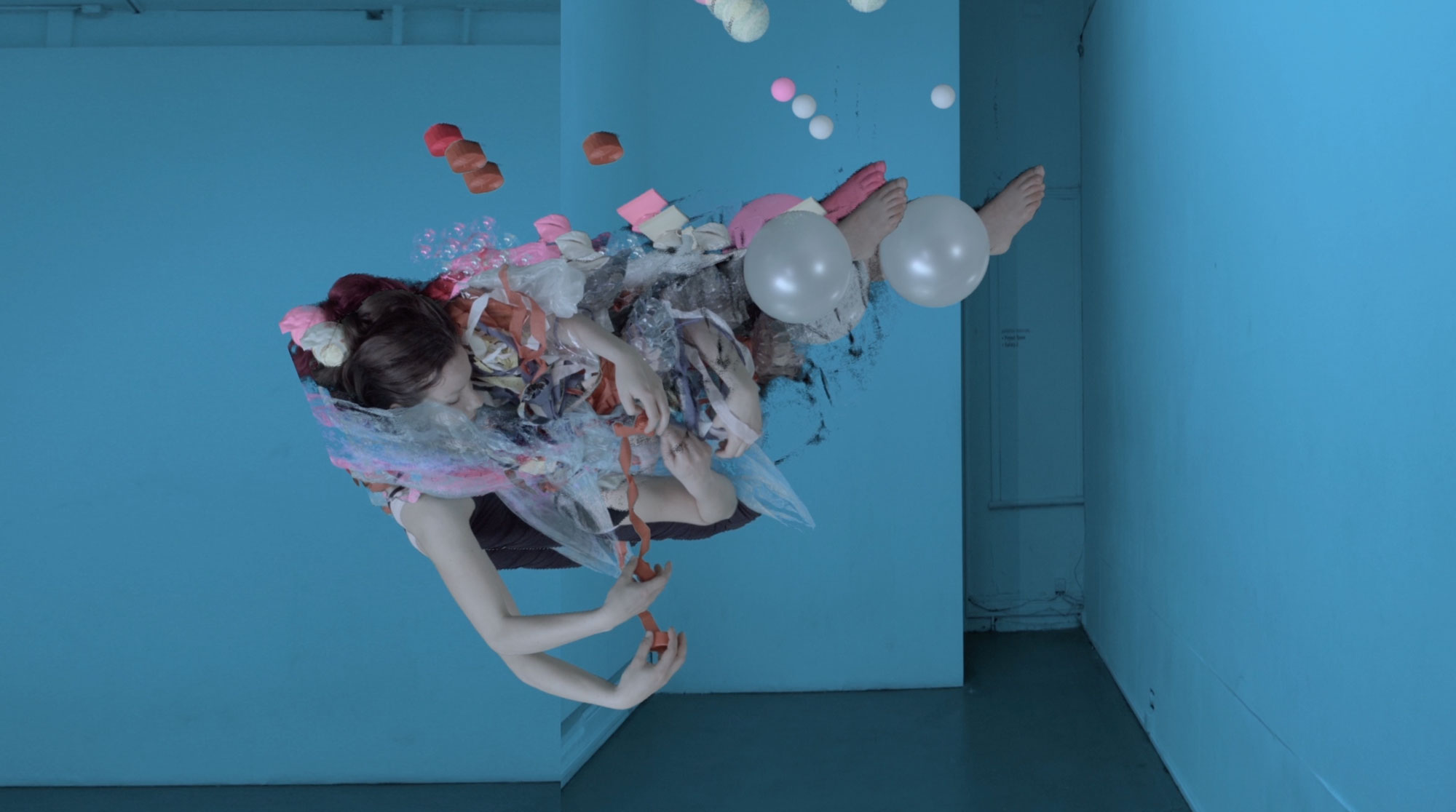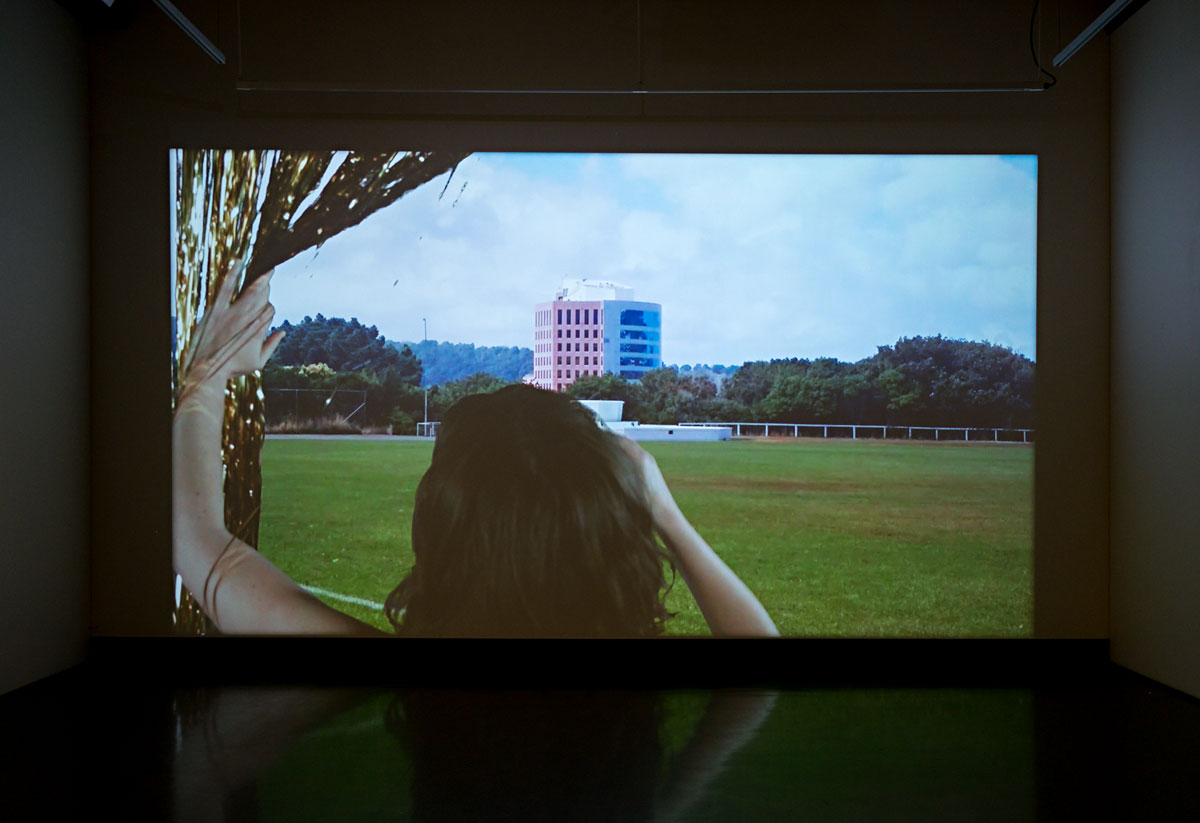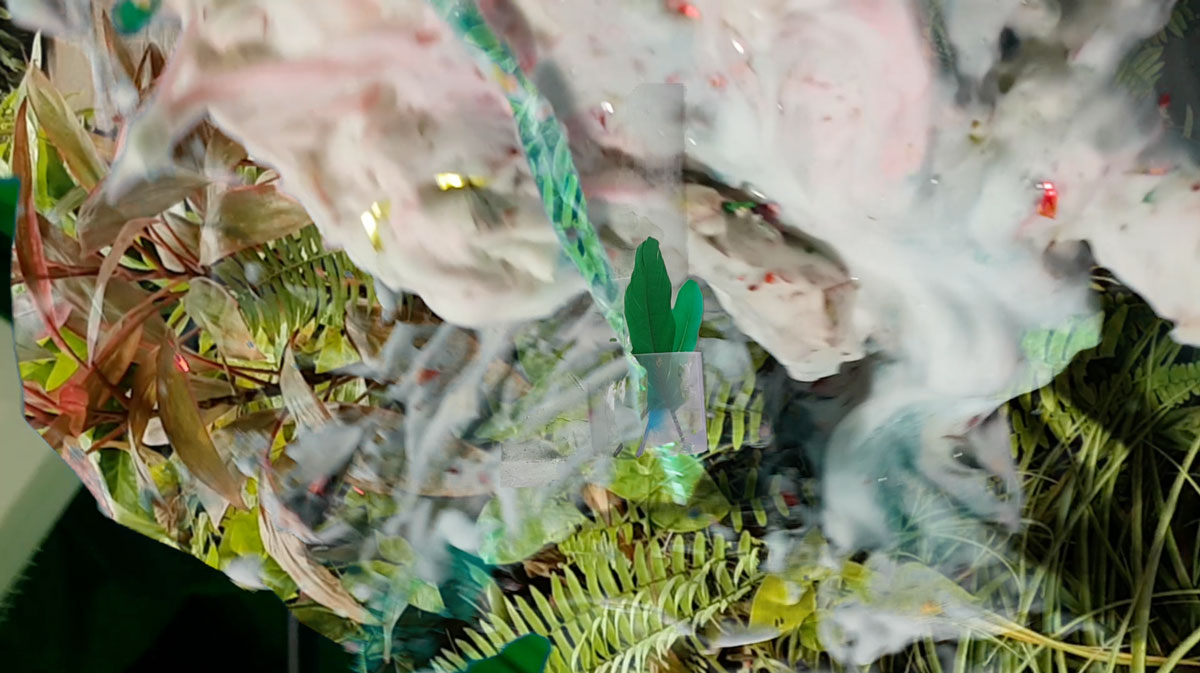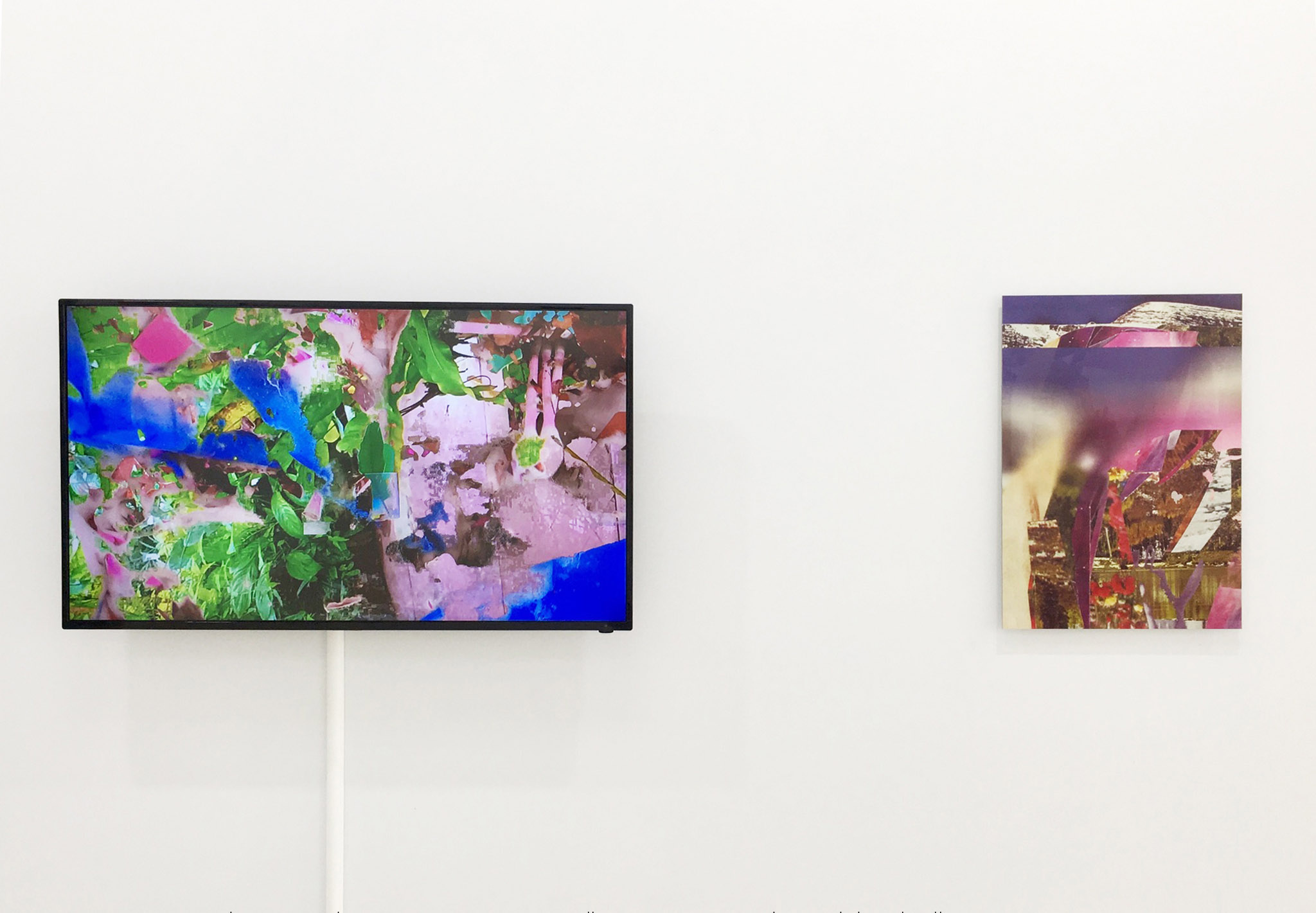Screen Space ︎︎︎ Image Space

Corinna Berndt, Assembling Physical Body, video still, 2013, with Rebecca Jensen.
“The World is large, but in us it is deep as the sea”1
"Can depths, the interior, the subjective, and the private … be seen in terms of surfaces, bodies, and material relations?"2
The quotes above suggest a spatial dichotomy relating to interior perception and the expression thereof. Rilke’s poem contemplates the depth and multi-layered richness of experiencing one’s surroundings intertwined with interior perception. Interiority is constituted not only by visual and cognitive processing of vast amounts of information, it also implies a multi-sensory perception, involving the entire body as a filter. If one could pictorialise interior depth through the relationships the body produces with other bodies, materials and surfaces in space, the image might be that of an ever-changing choreography of multiple, non-linear connections among dynamic, unfixed elements: a moving image of a body interacting on an ever-changing picture plane. The works featured below investigate the image space of digital video as an unfixed space of convergence. The resulting works contemplate the digital screen space as a paradoxical space, simultaneously flat and deep, and capable of holding on its surface a multi-layered, tactile world, expressive of both physical appearances and the abstract poetic depths of the imagination.
Between 2015-2017, I investigated the image space and blue screen technology through a phenomenological framework, centred around concepts of embodiment and the imagination. In the context of this project, I considered the imagination as part of the invisible, lived dimension of the body, responding to the affective qualities of everyday experiences. Viewed in that manner, the imagination is linked to the concept of the creative body and its “capacity of going beyond created structures in order to create others.”3 In my practice, the imagination continually re-emerges through my intuitive, playful improvisations with materials and the digital medium. Through a process-based and speculative approach, I improvised performances with objects, which I further explored through the medium of digital video, and which formed the basis of my MFA dissertation.
Video is a medium of multiplicity. Its history encompasses multiple processes and theories. Through the advance in digital imaging technologies, video has become increasingly hybrid in its form. Considering its complexity, American art theorist Rosalind Krauss associates video with discursive chaos, describing it as a medium that has no unifying core and that is defined through its inherent multiplicity. Video thus also presents itself as an open-ended medium for phenomenological investigations between the body and technology.
Working predominantly with blue screen technology, this project examined the screen space and the body in video, specifically through digital compositing techniques. Blue screen technology produces areas of transparencies in the image space, which can be filled with other moving and still images. In this manner, blue screen technology suggests the potential for indefinite construction and re-imagining of the screen space as a tactile surface. Recording my body in a blue screen studio therefore also generated possibilities for producing multi-sensory interactions with digital moving image technologies.
1 Rainer Maria Rilke, quoted in Gaston Bachelard and M. Jolas, The Poetics of Space (Boston:Beacon Press, 1994), 183.
2 Elizabeth Grosz, Volatile Bodies : Toward a Corporeal Feminism, Theories of Representation and Difference (Bloomington, Ind. : Indiana University Press, 1994), 160.
3 Maurice Merleau-ˇPonty, The Structure of Behavior (Boston : Beacon Press, 1963), 175.




Corinna Berndt, selected video stills, 2016

Corinna Berndt, Hinged Position, video still, installation view, Counihan Gallery, Brunswick, 2016. Photo: Documentor.com.au

Corinna Berndt, Re-imagining the Screen Space, installation view, Margaret Lawrence Gallery, Southbank, 2016.
Photo: Drew Echberg
Photo: Drew Echberg

Corinna Berndt, Parts and Movement, video still, 2017

Corinna Berndt, Tactility Project, video still. 2016
Corinna Berndt, Screen Saver, 2017, single channel video, 8:32
Corinna Berndt, Green Park Landscape, 2016, single-channel video sculpture, 11:13
Corinna Berndt, Hands, single channel video still, 2015, 2:51

Corinna Berndt, exhibition documentation, Invisible Vision & Superimposed Rhubarb, Kings Ari, Melbourne, 2017.
Corinna Berndt, exhibition documentation, Invisible Vision & Superimposed Rhubarb, Kings Ari, Melbourne, 2017.
Corinna Berndt, Invisible Vision & Superimposed Rhubarb, 2017.